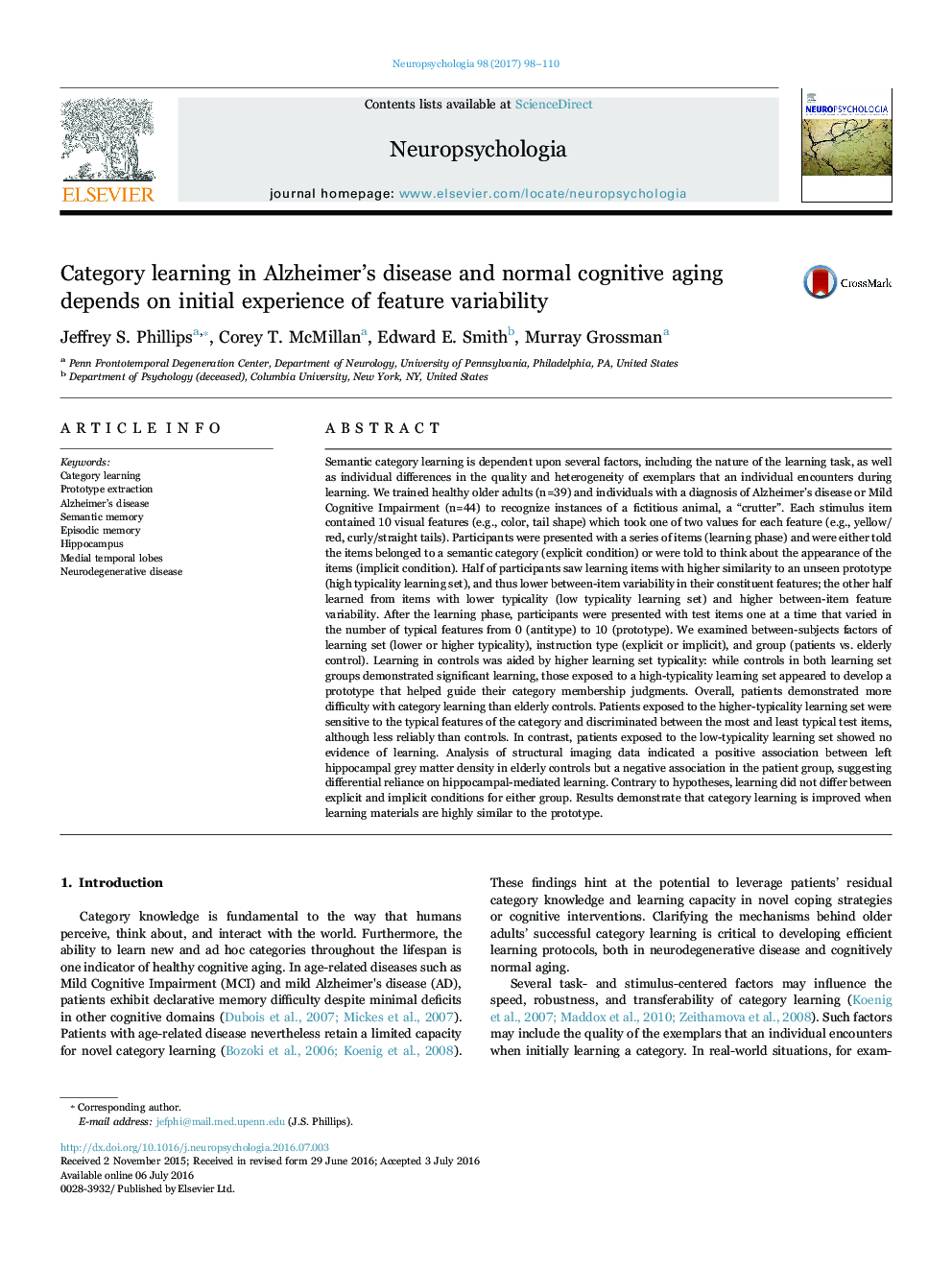| کد مقاله | کد نشریه | سال انتشار | مقاله انگلیسی | نسخه تمام متن |
|---|---|---|---|---|
| 5045274 | 1475557 | 2017 | 13 صفحه PDF | دانلود رایگان |
- Elderly controls and Alzheimer's disease patients learned a novel visual category.
- Patients and healthy seniors alike learned features of the target category.
- Controls who learned from high-typicality exemplars had superior learning.
- Controls' and patients' learning was differently associated with left hippocampus.
- Learning was not affected by instruction type (explicit or implicit).
Semantic category learning is dependent upon several factors, including the nature of the learning task, as well as individual differences in the quality and heterogeneity of exemplars that an individual encounters during learning. We trained healthy older adults (n=39) and individuals with a diagnosis of Alzheimer's disease or Mild Cognitive Impairment (n=44) to recognize instances of a fictitious animal, a “crutter”. Each stimulus item contained 10 visual features (e.g., color, tail shape) which took one of two values for each feature (e.g., yellow/red, curly/straight tails). Participants were presented with a series of items (learning phase) and were either told the items belonged to a semantic category (explicit condition) or were told to think about the appearance of the items (implicit condition). Half of participants saw learning items with higher similarity to an unseen prototype (high typicality learning set), and thus lower between-item variability in their constituent features; the other half learned from items with lower typicality (low typicality learning set) and higher between-item feature variability. After the learning phase, participants were presented with test items one at a time that varied in the number of typical features from 0 (antitype) to 10 (prototype). We examined between-subjects factors of learning set (lower or higher typicality), instruction type (explicit or implicit), and group (patients vs. elderly control). Learning in controls was aided by higher learning set typicality: while controls in both learning set groups demonstrated significant learning, those exposed to a high-typicality learning set appeared to develop a prototype that helped guide their category membership judgments. Overall, patients demonstrated more difficulty with category learning than elderly controls. Patients exposed to the higher-typicality learning set were sensitive to the typical features of the category and discriminated between the most and least typical test items, although less reliably than controls. In contrast, patients exposed to the low-typicality learning set showed no evidence of learning. Analysis of structural imaging data indicated a positive association between left hippocampal grey matter density in elderly controls but a negative association in the patient group, suggesting differential reliance on hippocampal-mediated learning. Contrary to hypotheses, learning did not differ between explicit and implicit conditions for either group. Results demonstrate that category learning is improved when learning materials are highly similar to the prototype.
228
Journal: Neuropsychologia - Volume 98, April 2017, Pages 98-110
